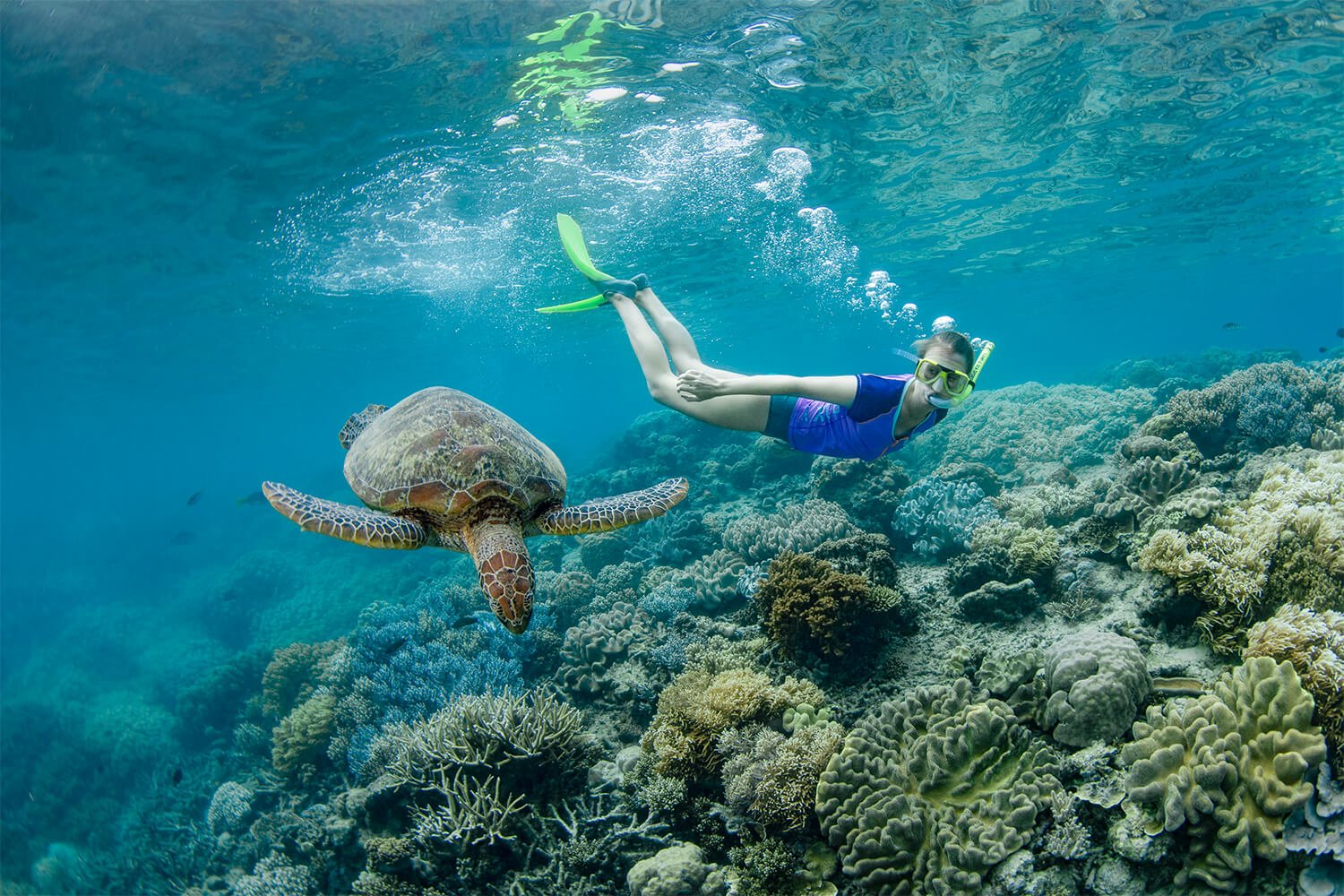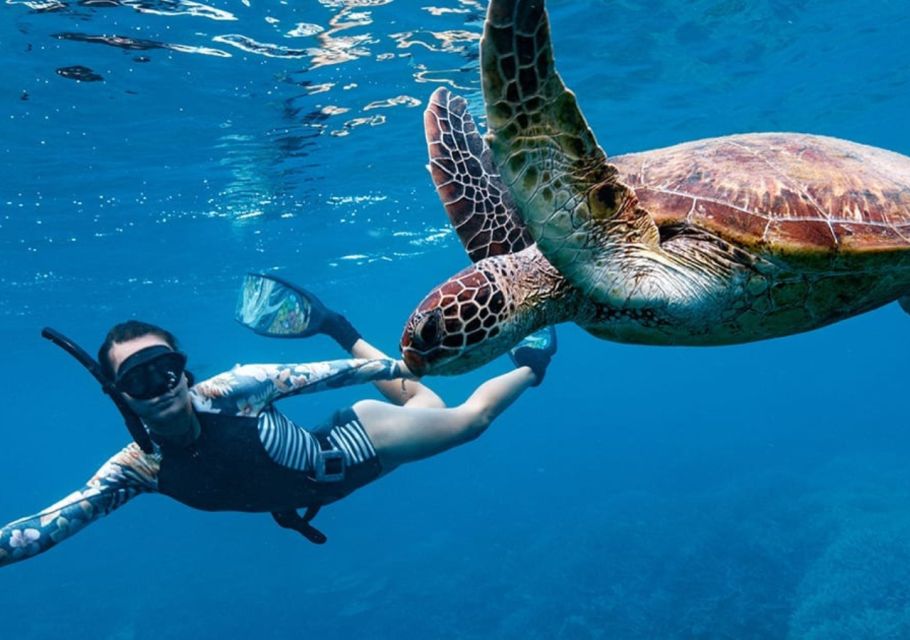
Australia’s Turtle Island: An Underwater Odyssey with Ancient Mariners
The world dissolves into a shimmering aquamarine when you slip beneath the surface off Australia’s famed ‘Turtle Island’. Not a singular, mythical landmass, but a collective name given to the pristine, turtle-rich havens of the Southern Great Barrier Reef, most notably Lady Musgrave Island and Lady Elliot Island. Here, amidst vibrant coral gardens and sun-dappled shallows, an ancient ritual unfolds daily: an intimate dance with the ocean’s gentle giants, the sea turtles. This is not merely a swim; it is an immersion into a living testament of nature’s enduring grace, a profound encounter that leaves an indelible mark on the soul.
From the moment the catamaran leaves the mainland, typically from Bundaberg or Gladstone, an anticipation builds. The journey across the Coral Sea is a transition, shedding the terrestrial world for one governed by tides and marine life. As the distant specks of Lady Musgrave or Lady Elliot materialize – low-lying cays crowned with Pisonia forests and encircled by dazzling white sand – the vibrant blue waters already hint at the wonders below. These islands, formed from millennia of coral growth and home to vast bird rookeries, are the epicentre of a thriving marine ecosystem, a designated Green Zone within the Great Barrier Reef Marine Park, offering unparalleled opportunities for human-turtle interaction.
Donning fins, mask, and snorkel, the plunge into the temperate waters is immediate and exhilarating. The initial sensory overload quickly gives way to a serene focus. Schools of iridescent fish dart through intricate coral formations – branching acropora, brain corals, and plate corals painted in hues of purple, green, and orange. But it’s the sight of the first sea turtle that truly takes the breath away, even through a snorkel.
A shadow detaches itself from the deeper blue, slowly materializing into a magnificent creature of prehistoric elegance. Often it’s a Green Sea Turtle (Chelonia mydas), their carapaces a mosaic of olive and brown, gliding effortlessly, propelled by powerful, wing-like flippers. Their calm, knowing eyes seem to hold the wisdom of centuries as they cruise past, perhaps surfacing for a languid breath of air before descending again to graze on the seagrass beds or algae-covered rocks.
"This isn’t just a swim; it’s an encounter with ancient wisdom," says Dr. Anya Sharma, a marine biologist with the Great Barrier Reef Foundation, who has spent years studying the turtle populations here. "These turtles have navigated these waters for millions of years. To share their space, even for a brief moment, is a privilege that underscores our responsibility to protect them."

Indeed, the ‘Turtle Island’ experience offers more than just a fleeting glimpse. The sheer abundance of turtles in these protected lagoons and reef systems is staggering. Depending on the season and specific location, snorkelers might encounter up to three distinct species. Beyond the ubiquitous Green Turtles, the Loggerhead Sea Turtle (Caretta caretta) makes its presence known with its distinctive large head and powerful jaws, adept at crushing shellfish and crustaceans. Less commonly, the Hawksbill Sea Turtle (Eretmochelys imbricata) might be spotted, recognizable by its pointed beak and beautifully patterned shell, often foraging amongst the coral for sponges.
Observing their natural behaviours provides an unparalleled education. A Green Turtle might be seen meticulously nibbling on algae, its ancient, toothless mouth a marvel of evolutionary design. A Loggerhead might slowly scour the sandy bottom, its focus absolute. Some turtles, particularly during the warmer months from November to March, are observed resting on the coral bommies, conserving energy, or even engaging in courtship rituals. The silence underwater amplifies the subtle sounds – the gentle swish of flippers, the soft clack of a turtle’s beak against coral.
The interaction is governed by strict ethical guidelines. Operators emphasize a "look, don’t touch" policy, maintaining a respectful distance to avoid disturbing these wild animals. Flash photography is discouraged, and approaching nesting turtles on the beaches is strictly prohibited. This adherence to responsible tourism ensures the turtles remain undisturbed in their critical habitats, allowing visitors to witness their natural lives without interference.
These islands are not just feeding grounds; they are crucial nesting sites. During the summer months, female Green and Loggerhead turtles, some having travelled thousands of kilometres, return to the very beaches where they were born decades earlier to lay their clutches of eggs. The sight of hatchlings emerging from the sand under the cover of darkness, scuttling towards the moonlit sea, is one of nature’s most poignant and miraculous spectacles, a testament to the life cycle that unfolds year after year on these shores. While snorkeling offers a daytime perspective, the knowledge that these delicate creatures embark on their life’s journey from these very sands adds another layer of reverence to the underwater experience.
"Every time a child’s eyes light up seeing a turtle for the first time, you know you’re doing something right, helping to foster the next generation of conservationists," shares Mark Jensen, a veteran eco-tourism guide at Lady Elliot Island, where turtles are almost guaranteed sightings. "Our job isn’t just to show people the turtles, but to explain why these places are so vital, and what we all need to do to protect them."
The Great Barrier Reef, a UNESCO World Heritage site, is a complex and delicate ecosystem facing unprecedented challenges from climate change, ocean acidification, and plastic pollution. Places like Lady Musgrave and Lady Elliot, with their healthy turtle populations, serve as vital strongholds and reminders of what is at stake. The very act of snorkeling responsibly with these creatures reinforces the urgent need for global conservation efforts.
The connection forged underwater extends beyond the moment. Back on the boat, the vibrant colours and graceful movements replay in the mind. The silence of the deep is replaced by animated chatter, as fellow snorkelers recount their individual encounters. Each story echoes a shared sense of wonder and a renewed appreciation for the natural world.
Leaving ‘Turtle Island’, the profound sense of connection remains. It’s a feeling of having been part of something ancient and beautiful, a brief yet potent communion with a species that embodies resilience and grace. The experience transcends mere tourism; it’s a pilgrimage into the heart of the reef, an opportunity to bear witness to the enduring magic of Australia’s underwater wilderness. It is a powerful reminder that while the ocean holds countless mysteries, some of its most extraordinary secrets are revealed in the slow, deliberate paddle of a sea turtle, a living link to a primeval past, swimming serenely into an uncertain future that we all have a hand in shaping. The memory of their gentle gaze, their effortless glide, serves as a lifelong advocate for the preservation of these magnificent mariners and the precious ecosystems they call home.


